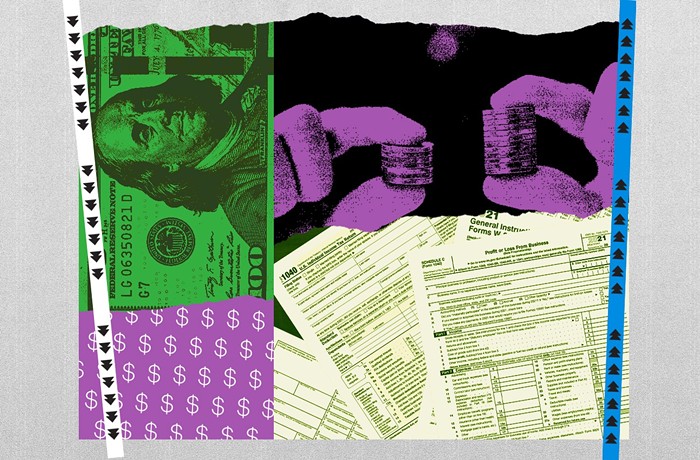I used to be a cook at a Bavarian lodge in the Rocky Mountains. The work was extremely tiring, and after hour 10 of slinging schnitzel and spätzle to Texan tourists, a coworker of mine would pull out his vape pen filled with concentrated cannabis. I would take my hands off the half-dozen sauté pans in front of me to take a nice long drag.
It would feel like a heavy wave washed over me. For a moment, I'd forget the stress of the day, my legs would stop hurting, and everything would become more like nothing. Then that wave would pass and I would work through a haze for the rest of my shift.
We were vaping the cheap butane hash oil that was almost completely tetrahydrocannabinol, aka THC. It is an ironic product: When you ingest the strongest chemical of cannabis by itself, it doesn't feel much like cannabis at all.
"THC on its own is a crummy drug—people are generally not going to like it. It's quite disorienting and it produces pretty severe short-term memory loss," said Dr. Ethan Russo, a board-certified neurologist who lives on Vashon Island and has studied cannabis for decades.
If THC alone were responsible for the benefits of cannabis, then Marinol (a synthesized version of THC that has been FDA approved since 1985) would have replaced pot. It hasn't. THC alone is not an effective medicine, and there's reproducible science that shows the entire cannabis plant is more effective than any single compound derived from it.
Understanding THC's limitations has implications for recreational users as well as medical users. I would somewhat enjoy my friend's crude THC concentrate at the end of a cooking shift, but opioid painkillers are also popular in that setting, so that's not a good barometer. Great cannabis is great not because of its THC potency but due to the right ratios of everything else other than THC.
Those other compounds are known as cannabinoids and terpenes. Cannabinoids (of which THC is one) interact with the human brain's endocannabinoid system. Terpenes are aromatic essential oils created by all plants, and cannabis has hundreds of them. If getting high was driving a car, then THC is the fuel and these other chemicals are the car. You need fuel to get anywhere, but the rest of the car's complicated machinery determines how fast you go and how the ride feels.
Scientists know that the ratios of cannabinoids and terpenes have profound psychoactive effects, but there is still much to learn about the specifics, according to Jeffrey Raber, who has a PhD in chemistry and owns Bellevue's Werc cannabis testing lab.
"Why do all the other things work? And which ones work? I think we've only just realized we should look at more than one thing at a time," Raber said. "We're not seeing any shortage of marketing claims, but I haven't seen any definitive double-blind studies. There are so many ways that cannabis can interact, and there are so many variables going on."
Russo is one of the scientists investigating the specifics of terpenes in cannabis. He published a paper in the British Journal of Pharmacology that claims specific terpenes are responsible for much of the therapeutic effects of cannabis. For example, limonene, a terpene that smells like citrus, can be an antidepressant; linalool, which has a lavendar smell, can fight anxiety. And alpha-pinene, which smells like pine trees, can actually increase short-term memory.
Cannabis breeders haven't waited for scientific consensus on terpenes—they've been breeding strains for specific terpene ratios for decades, giving us strains like Lemon Haze, which is chock full of that uplifting limonene, or White Widow, which is filled with a high ratio of sedating myrcene.
Raber recommends using a trial-and- error process with different strains to find the right cannabis for your needs, but it's important to remember there is no regulation on cannabis strains. When a grower sells their OG Kush to a retailer, they do not have to prove that their OG Kush is the same strain as another grower's OG Kush.
If we can't trust strain names, at least we can turn to the paradigm of indica versus sativa, right? Indica relaxes and sativa uplifts? Wrong. Indica and sativa may have been distinct centuries ago, but there's now no discernable distinction between the two.
"Even if they were two separate groups at one point, they're all mixed up now. There's so much hybridization," said Mowgli Holmes, chief scientific officer for Phylos Bioscience, a Portland-based cannabis research firm.
When you do find something you like, hold on to the packaging. Buying from the same grower again is the only way to know you are getting the same strain. ![]()




















